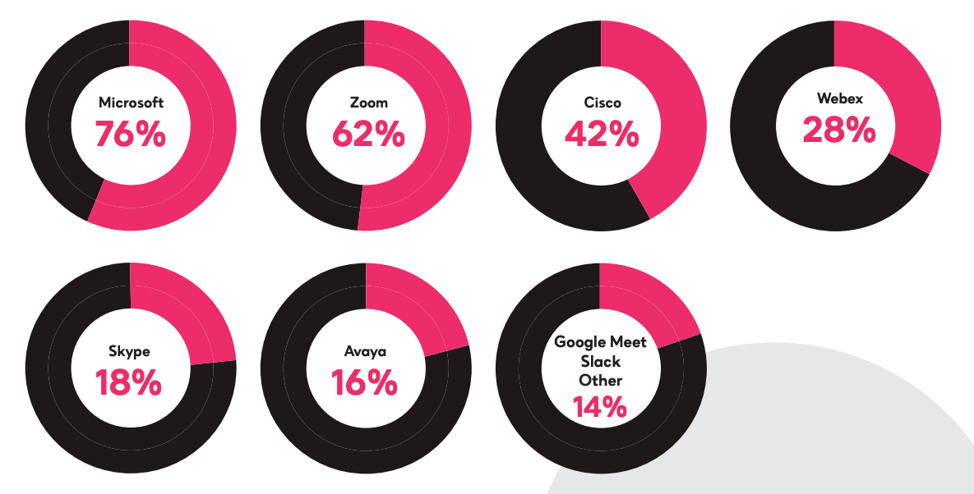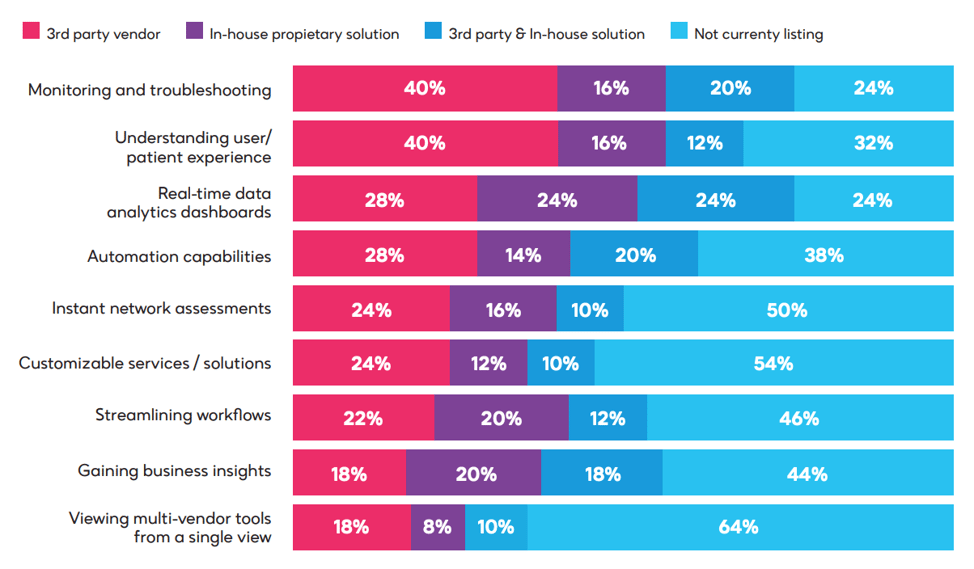As healthcare organizations have expanded their use of remote and hybrid communication platforms, having a unified communication and collaboration (UCC) platform is vital to success.
The face of healthcare has changed. Today, it’s much more likely that your doctor, patient or colleague may be communicating with you through a virtual solution.
COVID-19 accelerated the adoption of telehealth and remote work environments. Today, according to new research conducted by HIMSS and sponsored by IR, the majority of hospitals are using multiple video and telecommunication solutions to support communication and collaboration with patients, employees and other key stakeholders, with an average of 2.56 tools per organization.

It’s critical, therefore, for these organizations to invest in an underlying unified communication and collaboration platform to support these various tools, said Kasey Fitzpatrick, Account Manager at IR.
“With the kind of digital transformation we are seeing in healthcare organizations to facilitate telemedicine applications and hybrid work environments, there are scores of potential points of failure across the continuum of digital transmission,” he said. “Organizations benefit when they have a solution that can monitor and interrogate those points of failure to make sure things stay up and running – that these different communication methods provide a good experience for all.”
Better patient communication and experience
Having such a platform not only makes the support of different digital tools more efficient, but also creates a better patient experience. As many organizations look for ways to improve their Hospital Consumer Assessment of Healthcare Providers and Systems (HCAHPS) scores, a UCC platform can ensure that healthcare organizations are “getting the right communications to the right patient in need,” according to Fitzpatrick.
“A big part of successful healthcare is finding a way for patients and doctors to easily communicate so that doctors understand what a patient needs, and patients understand what they need to do to feel better,” he said.
“The baseline for that communication is knowing that you have the proper tools in place to see and talk to each other clearly. If we don’t have that baseline, there will be gaps in communication, and you will likely have higher cost engagements. So, the more you can do to be successful in this digital virtual environment, the better it is for everyone.”
UCC solution delivers multiple benefits
As noted in the HIMSS research , healthcare organizations frequently rely on third-party vendors to improve performance, to support monitoring and troubleshooting efforts (40%) and to understand the user/patient experience (40%). They also stated that third-party vendors are used for real-time data analytics dashboards (28%). This is not a surprise to Fitzpatrick. A UCC solution better ensures performance and efficiency while also improving data integration and management.

“Year after year, quarter after quarter, healthcare organizations are constantly being challenged to do more with less,” he said. “When you don’t have to spend all your time putting out fires, trying to deal with emergency after emergency to keep these tools performing at a high level, you can be more efficient. You don’t have to keep searching for that needle in a haystack to make sure that the experience is good and that you have the data you need.
“Instead, you’ll know you have a strong solution in place that is aligned with growth and innovation so your engineers and physicians can stick with their core competencies and focus their time on higher-value tasks,” Fitzpatrick concluded.



